Boulder Beach — Mimosa Rocks National Park, NSW. 1996. Transparency scan. …
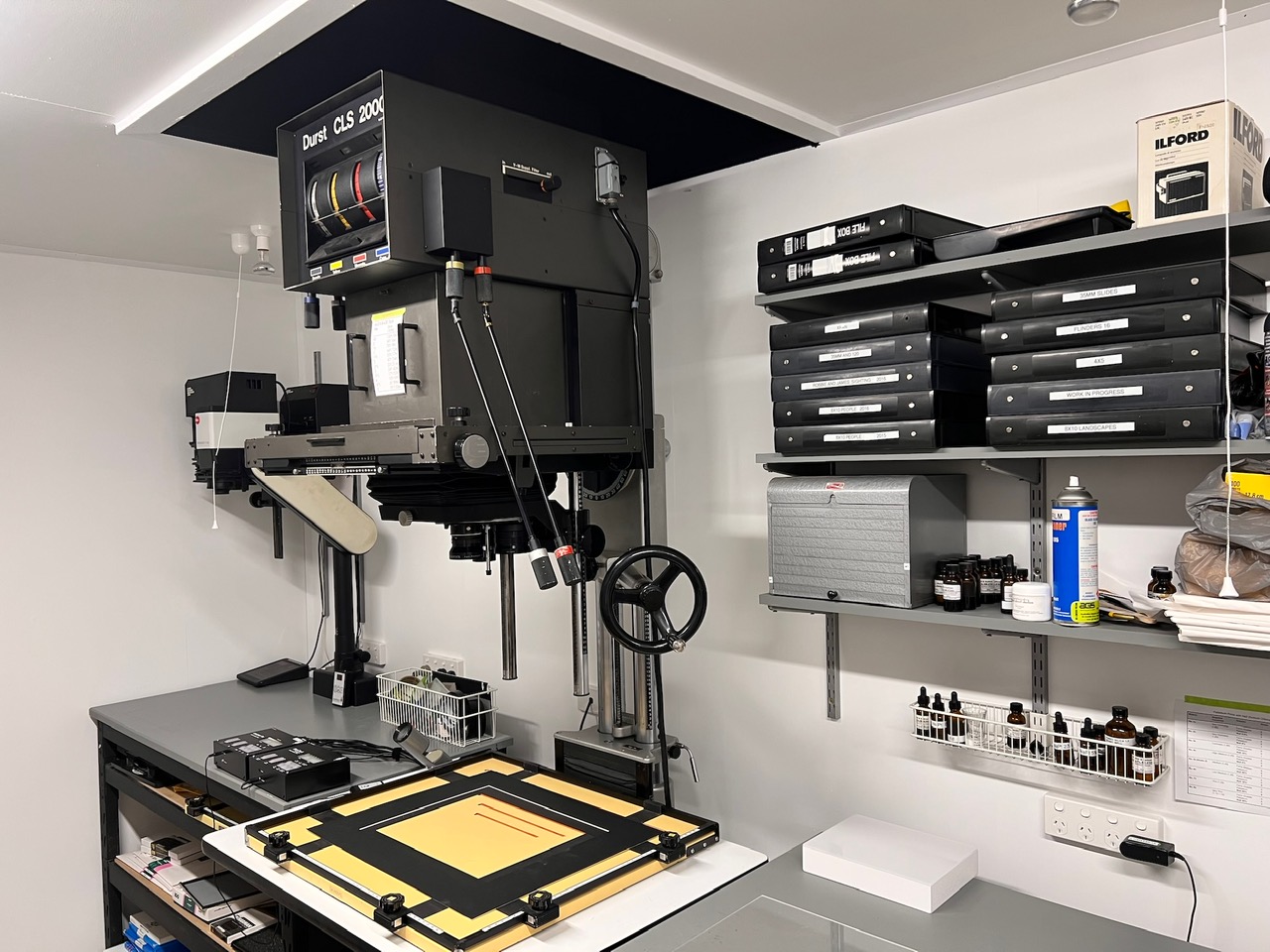
Darkroom – James Pierce. Part three
The final chapter of James Pierce’s three part darkroom story. Part two can be seen here.
Another move of house leads to the creation of another darkroom and with this comes the chance to make some small improvements based on the experience of both my own and friends’ darkroom spaces. I was always very happy with the last one, so many things are retained. The ‘business’ end of the darkroom is actually almost identical to my last one (covered in part 2): a long sink down one side, and enlargers down the other. The big change this time was making the room twice as long and including a ‘workroom’ type space for storing and mounting prints.
So what’s new, what’s the same and why? I recently hosted a number of large format friends to do a bulk process of a large film backlog. While we were working I asked the gang what things in the darkroom they wanted stories about for this article.
Changes
The shape and layout of the room – Being a new build I had the chance to build whatever size and shaped darkroom I wanted. The room is 3.5m wide and 7m long, the walls are 2.4m high which is convenient as a standard sheet material size – it saves on material if you work to a standard size. I had to put a little ceiling extension in above the big 8×10 enlarger again. The walk way down the middle of the room is quite wide, which makes it practical with multiple people working in the space together. The main thing a bigger space allows for is space for flattening prints, storing prints, having a computer and printer and having space to work through projects in the darkroom vs elsewhere.
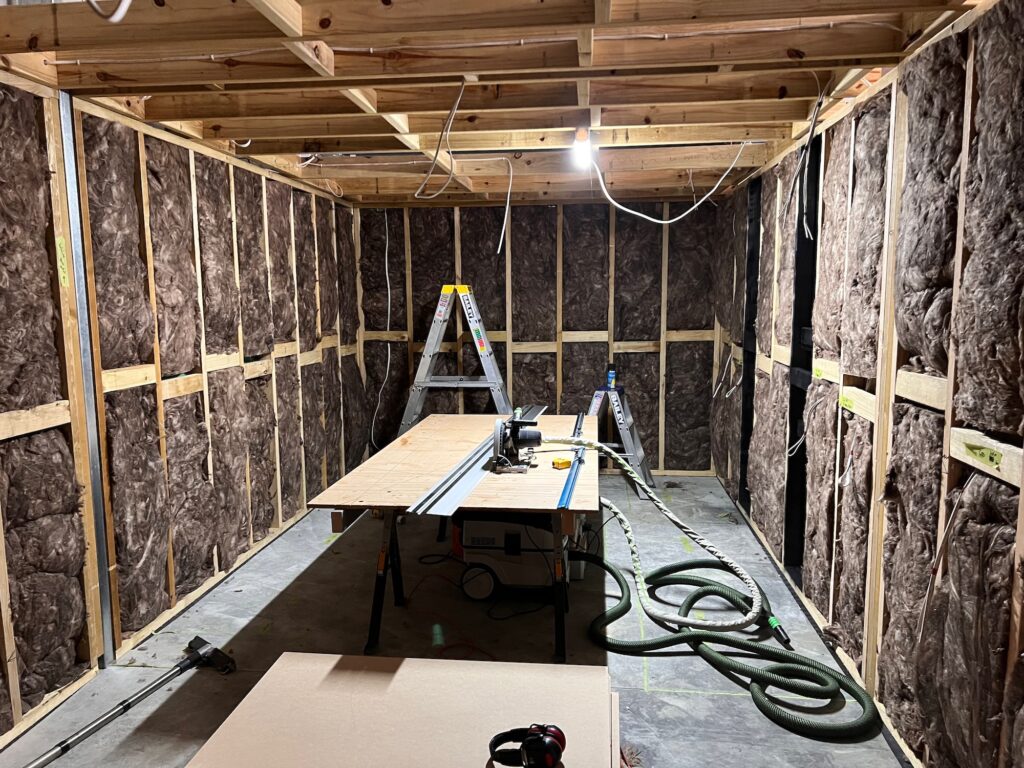
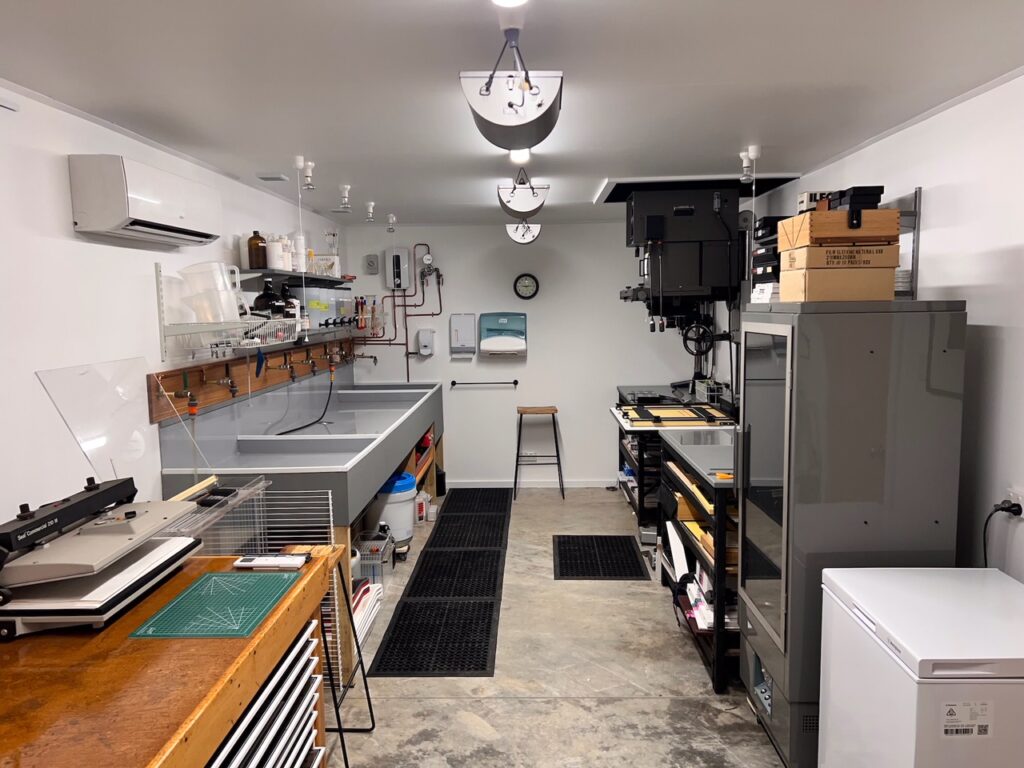
Safelights – I’ve reused the same traditional 10×12” Ilford number 1 red glass filter based safelights. However my filters were worse for wear and starting to delaminate so I replaced them with red acrylic Doran safelight filters. They looked great but didn’t pass a 10min safelight fog test. I switched to red 620nm 0.5w led bulbs which diffused off the roof give a good even light. They test safe to 15min which is long enough for me. A small tweak is that the safelights are controlled by my enlarger timer and turn off when exposing. This makes the print analyser accurate, and judging focus and doge and burns easier.
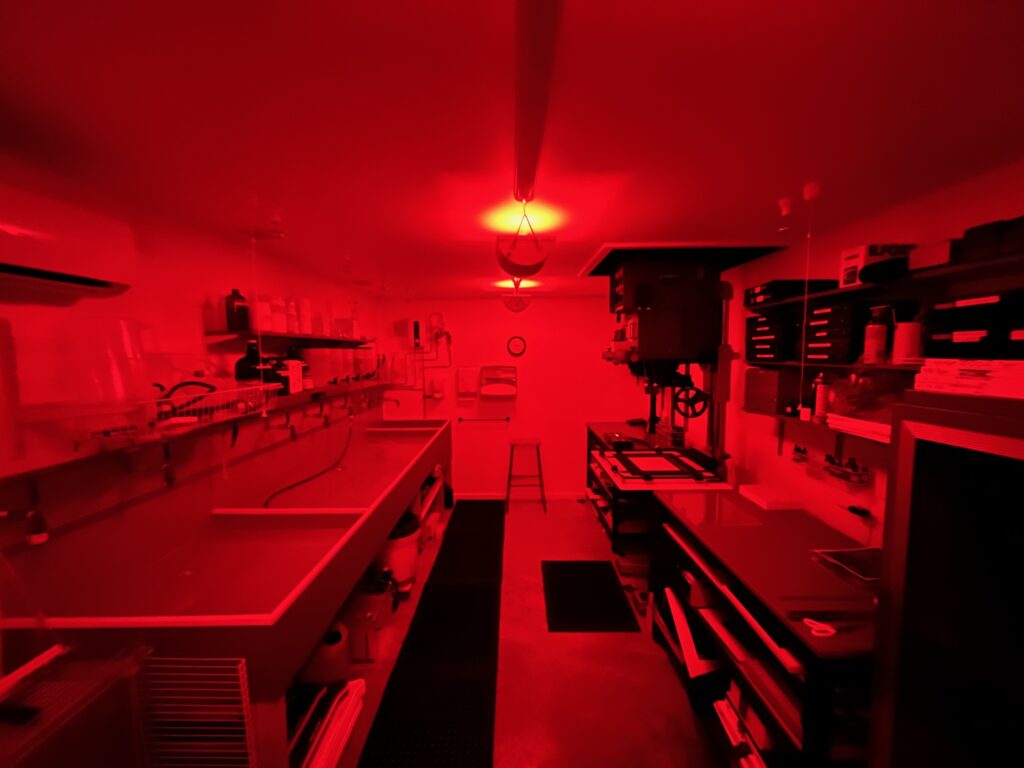
If you have’t tested your safelight in your darkroom you need to! Link to Kodak process here.
Sinks – The previous darkroom had a 3 metre long stainless steel sink which was a great size for 4 x 20x24inch trays. It had a few downsides which I’ve improved on this time round: the bottom wasn’t very flat, it was deeper than ideal which made rocking trays more difficult over long sessions, and the biggest issue was nowhere to wash hands or mix chemistry once the sink was full of trays. The new sinks are 6mm grey PVC folded and welded, intentionally installed without any fall which allows for the most efficient use of chemistry, especially in big trays. My experience is that even with fall you need to squeegee our your sinks to get them dry anyway – a good habit to keep your darkroom dry and mould free (Thanks BM). The main working sinks are 100mm deep which is plenty for trays and washing prints. At the end there is a smaller 300mm deep sink which is ideal for washing hands, mixing chemistry or washing out graduated cylinders and tongs etc.
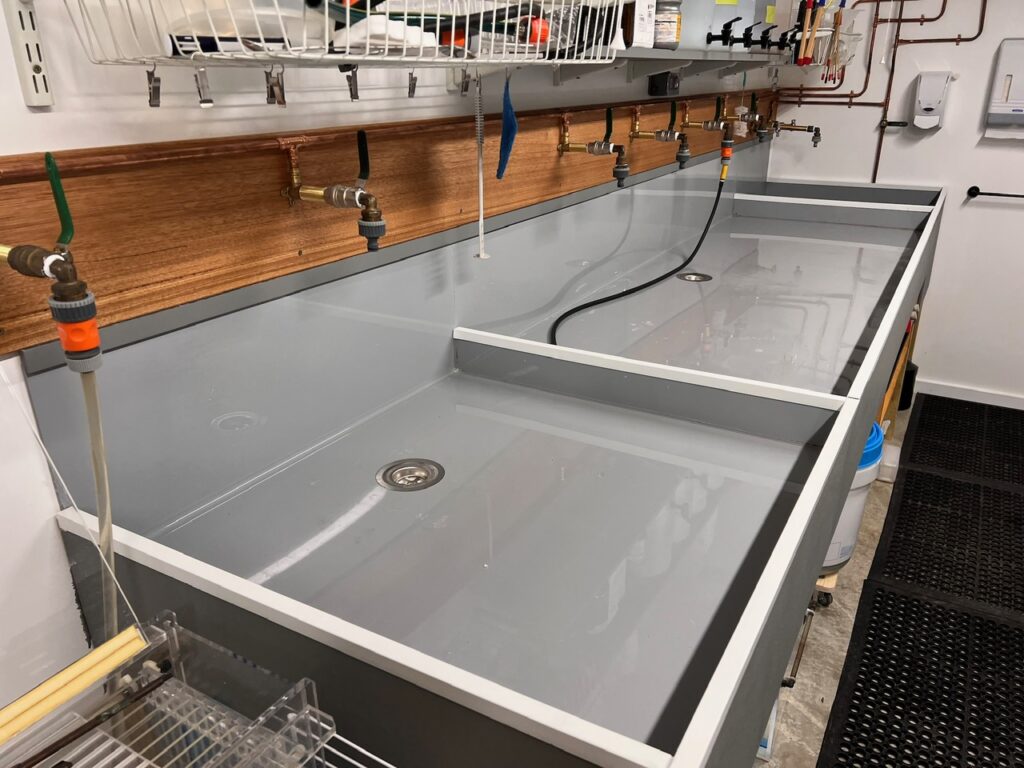
Workbenches – These great workbenches have had many lives and after they came out of a friend’s darkroom I was very pleased to be able to give them another home and continue their life. Large drawers under one half for print and paper storage and drying screens under the other. This and a small computer bench make up the workroom space.

FilmDryer – Like the workbenches the film dryer was recycled from another darkroom. In the past I’ve always just hung my film up over the sink to dry. Having a heated cabinet to dry film is a great luxury, you can have film dry and ready to proof in about 20min; it’s also really useful to quickly dry alternative process papers after coating. I wasn’t really sure if I wanted to give up the space to use it, but it’s totally worth it – especially if you spend a whole weekend processing film with your mates!
The Gallery Space – Something I’ve enjoyed in other darkrooms is having different artists’ work on the walls. It gives inspiration and examples of great prints for comparison. The gallery rail system makes it easy to change and rearrange the prints over time.
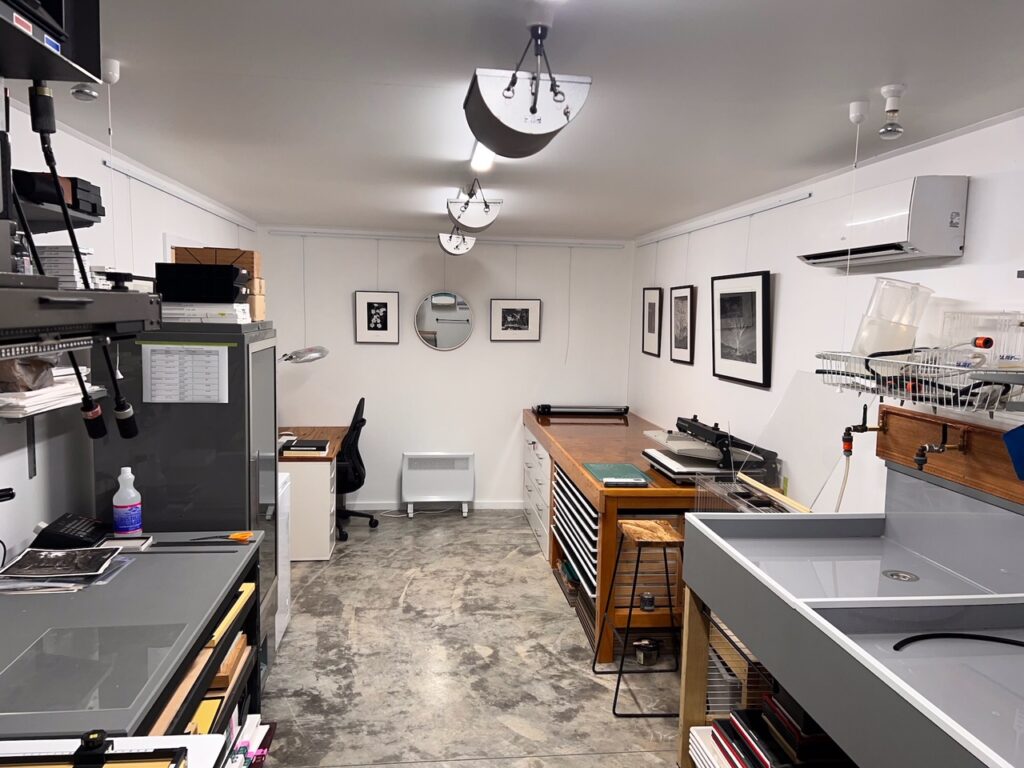
Water System – The darkroom is fed by rainwater from a tank via large 20 micron and 1 micron filters. A small single phase instant electric water heater means no hot water being stored between printing sessions. Otherwise it’s very similar to my previous setup – tempered water taps right along the sink, plus hot and cold for chemistry mixing. Exposed copper for extra bling.
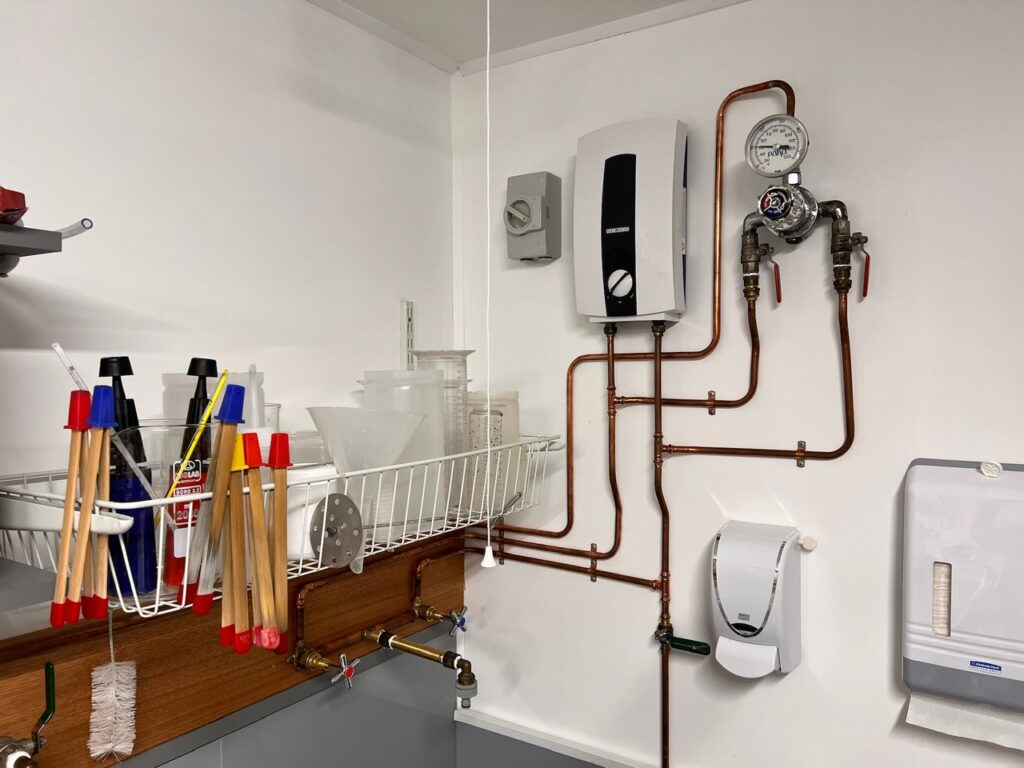
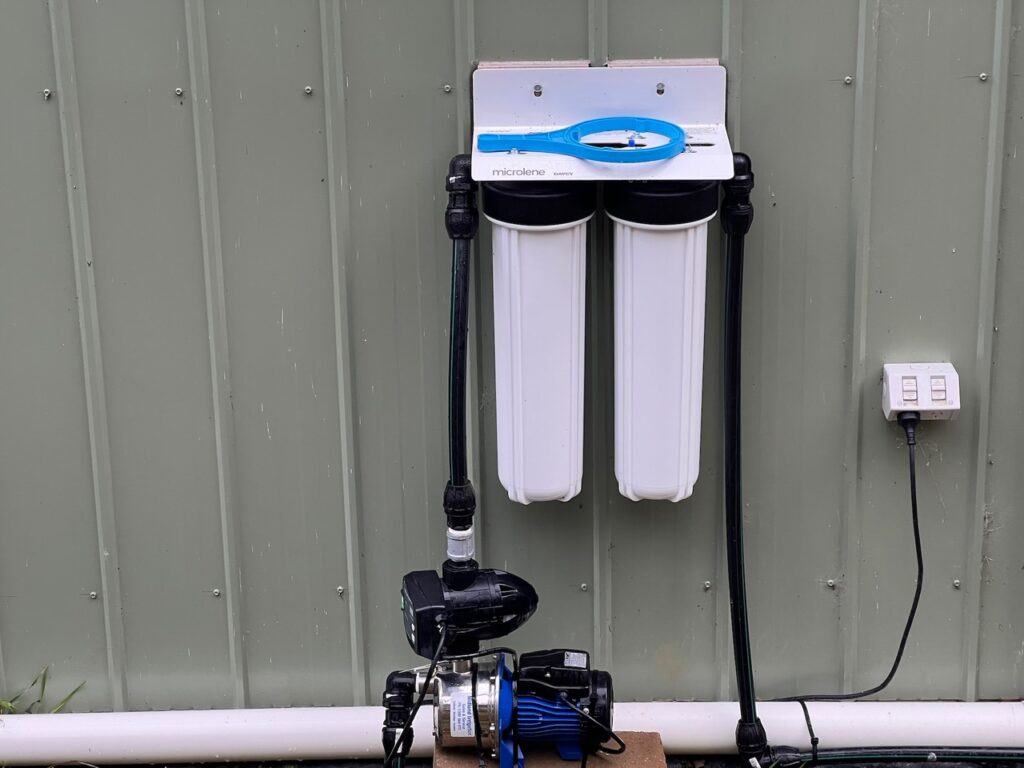
What has stayed the same?
The main enlarger is still the CLS 2000 8×10 and all the other hardware, trays, print washers are being reused. I still use the F-Stop timers for everything, once you switch to relative exposures it’s hard to going back.
The shelving has all been recycled, and having the wire shelves over the sink still works really well to leave graduated cylinders and so on to dry.
The ventilation system is also the same: vents in the wall using the cavity space as a light trap with some filter material for the air inlets and the same fan with some plumbing pipe drawing air out of the space from above the sink.
Finally the same small split system has been reused for temperature and humidity control.
So what is next?
I want to learn how to print digital negatives to make larger UV contact prints for platinum/palladium. I also want to get back to making new series of work after years lost to a global pandemic and moving house.
Feel free to ask questions about any details you’re curious about in the comments.
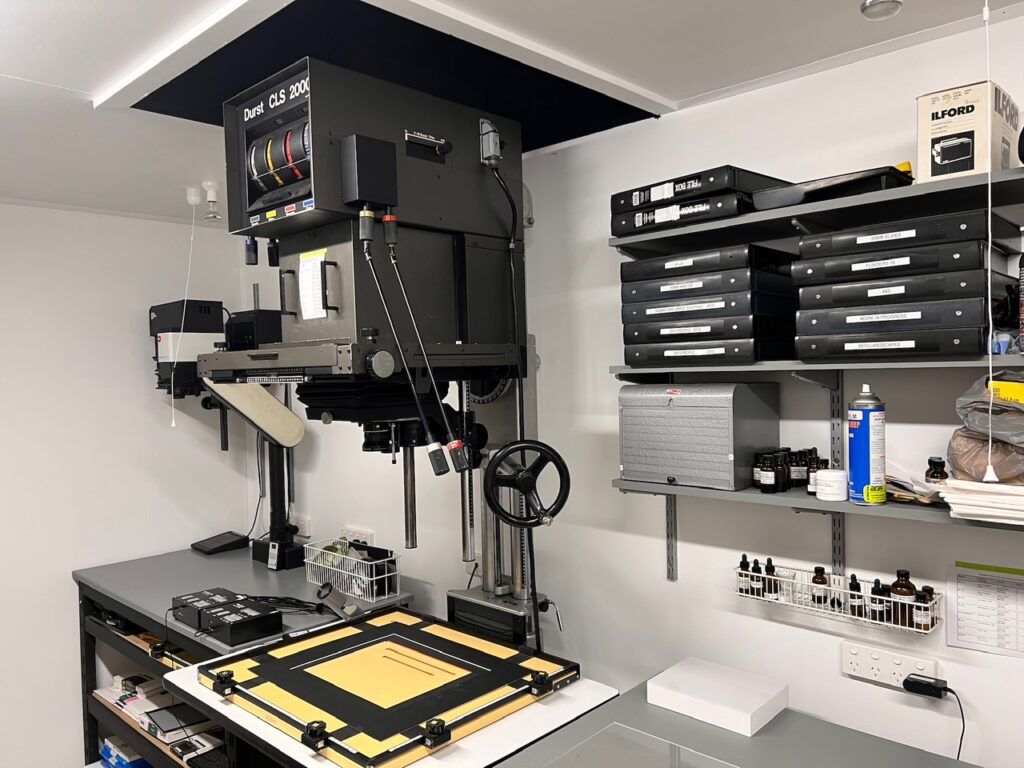
Parts one and two of James Pierce’s darkroom articles can be seen here.
Previous Post: Preconceptions and Negative Space – Alex Bond

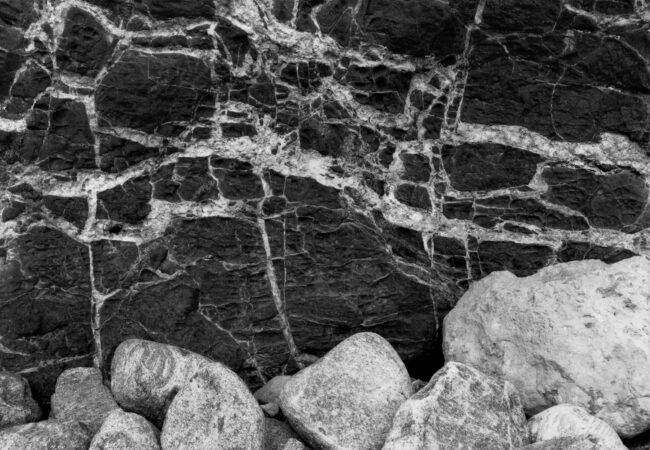
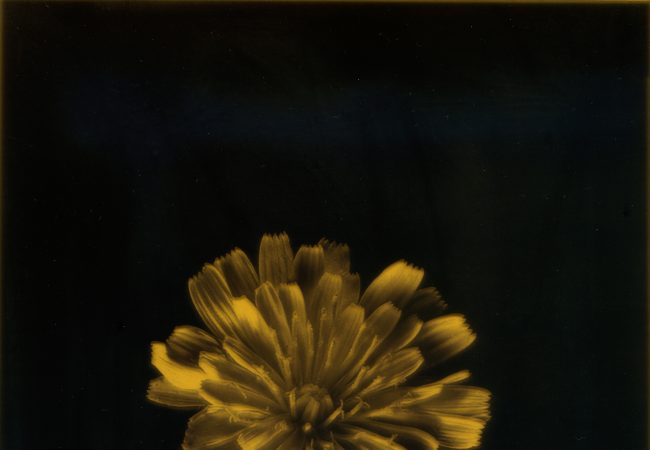
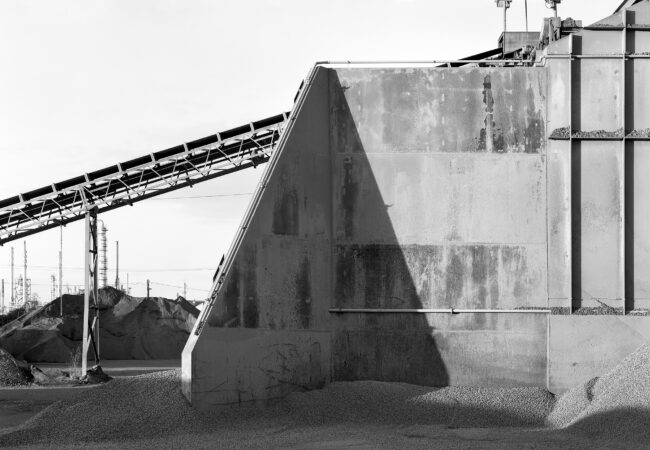
You have a very impressive darkroom James, interesting observation about your older stainless steel sink versus the one you have now with the flat bottom. My darkroom sink started out over 30 years ago as a custom-built pine table with a 10cm pine board lip around its circumference. It was nearly 4 metres long and designed to take 6, 16x20in trays. But when I brought this beautiful wet bench back with me from Tasmania to Western Australia, the pine warped and cracked in during its first WA summer. Since then I have refurbished it and it has now morphed into a new wet bench. Your wonderful yellow pine workbench reminds me of my original wet bench.